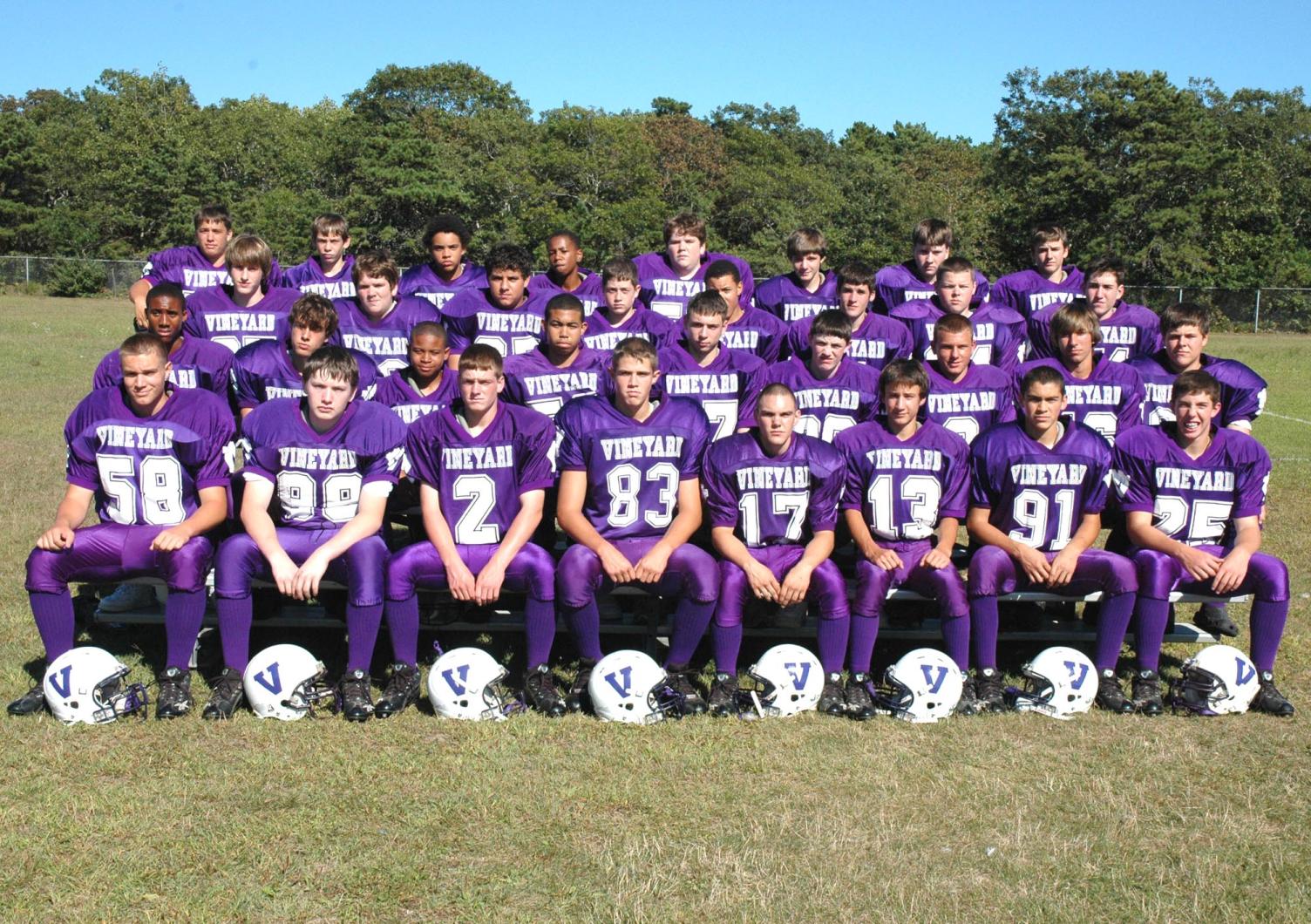The sounds of a bloody brawl direct me to the football field behind the regional high school where the junior varsity team is warming up for Saturday. Getting nearer, one cry stands out. “I want to see Balboni get killed!” I quicken my step, wondering whether I’m about to scoop an altogether more serious event.
I’m from England and I didn’t know what to expect from this game — I was told junior varsity was a decent place to start. “They’ll be covering the basics, like throwing and catching,” I was told. Today they seem to be concentrating on the pummeling aspect of the sport. The team has formed a circle around two opponents fighting it out in the middle, and are shouting encouragements. “Destroy him!” Someone shouts. “Rip him down!” A stocky player pile drives his opposite number out of the circle at a jogging pace, finishing with a flourish by folding the guy in three and collapsing on top of him in a series of helmets butts. The padding, which always looks faintly ridiculous to foreigners, suddenly makes a lot of sense. Football careers would clearly be very short if it wasn’t for all the armor.
The crowd shouts its appreciation, the winner helps his victim up and they embrace. Along with the protection this is the second and only other difference I can intimate between this and street fighting. Oh, and then there’s the ball.
“Okay, I’m going to throw this up for you,” says coach Phil Hughes to his team, picking up a football and selecting three players. I assume he has called a halt to the ritual violence and in a way he has: Now he is interested in seeing something a little more free-form. The purpose, such as it is, would appear to be to catch the ball and run with it. Failing that, to put as serious a hurt as possible on your teammate. “The rules are, there are no rules. I throw the ball up at you and you kick each other’s asses,” confirms Mr. Hughes, pounding the ball in to the ground. As it hops up the rest of the team goes wild. “Oh damn!” says one player in mock horror at witnessing a particularly punishing tackle. One player makes the decision ahead of time that the correct target is in fact the face of his fellow teammate, putting on an initial burst of speed before back tracking into a clothes hanger maneuver.
According to Mr. Hughes, these routines are crucial to learning the game. “A big part [of junior varsity training] is getting used to the physical aspect,” he says, “so I encourage them to get in there and scrimmage.” They will need to be fully versed when they meet Nantucket. “The Nantucket offensive line have two guys measuring 6’5” and they are 220 pounds.” Martha’s Vineyard has the numbers though, with 40 players, and has the advantage of being able to substitute and take rest times. Nantucket has only 21.
From the sidelines almost every junior varsity team member looks eminently capable of rearranging my body parts. I can only imagine the carnage full-grown varsity players are able to cause. Mr. Hughes recounts some of the collateral damage he has witnessed coaching school football over the past nine years. “They’re not terrible, the injuries,” he says. “You regularly get torn muscles, broken fingers, that kind of thing. The worst injuries tend to be broken legs . . . .” Based on the warm-up exercises it is not hard to imagine that this is a regular occurrence.
As for this reporter, there is plenty enough exhilaration just watching it all from the sidelines. I never fully grasped American football. But now I do.
Go Vineyard.







Comments
Comment policy »